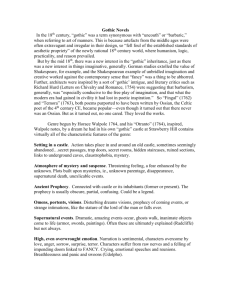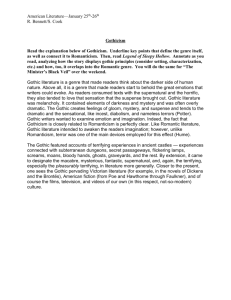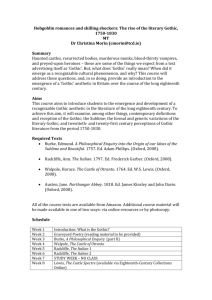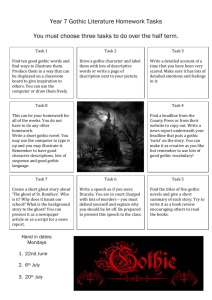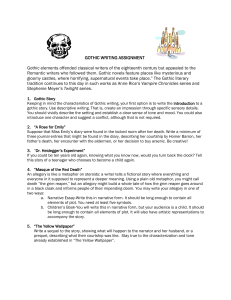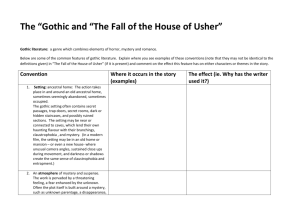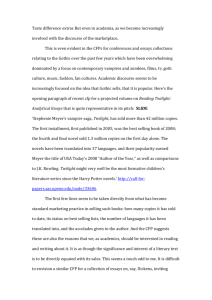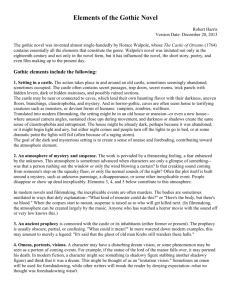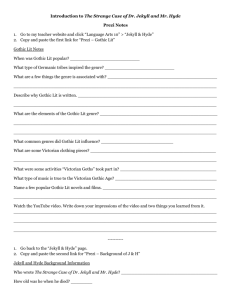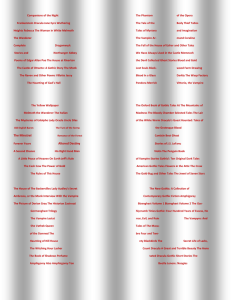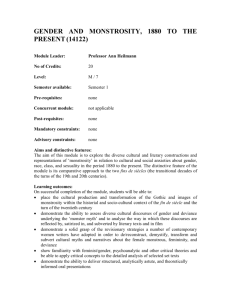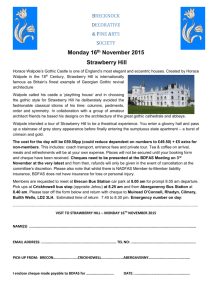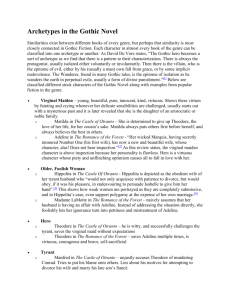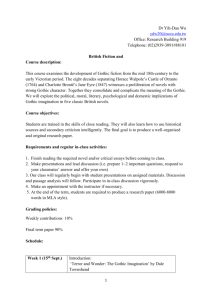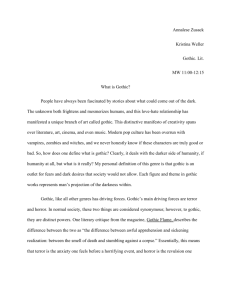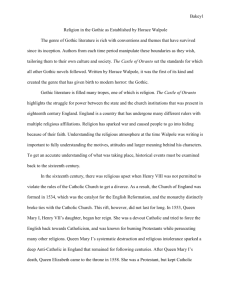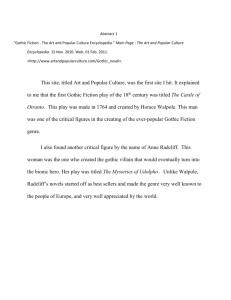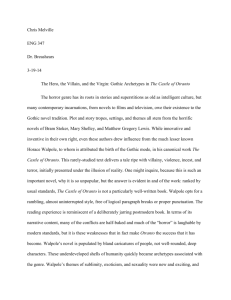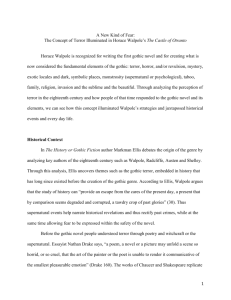I`ve contemplated the question and I`ve considered the contenders
advertisement
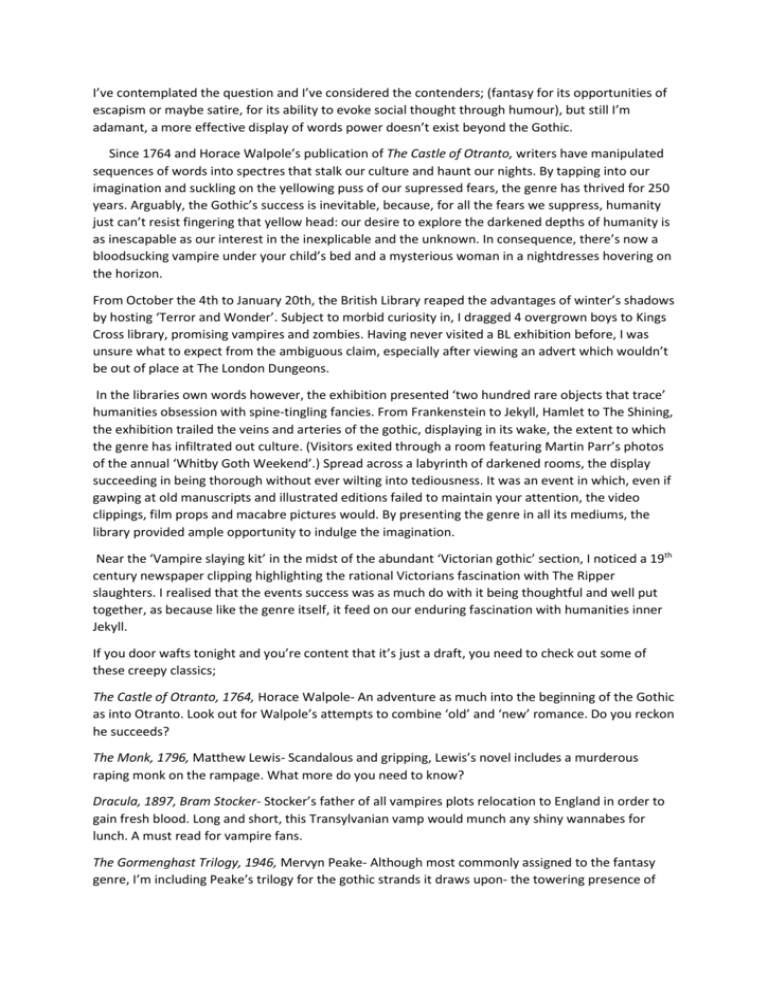
I’ve contemplated the question and I’ve considered the contenders; (fantasy for its opportunities of escapism or maybe satire, for its ability to evoke social thought through humour), but still I’m adamant, a more effective display of words power doesn’t exist beyond the Gothic. Since 1764 and Horace Walpole’s publication of The Castle of Otranto, writers have manipulated sequences of words into spectres that stalk our culture and haunt our nights. By tapping into our imagination and suckling on the yellowing puss of our supressed fears, the genre has thrived for 250 years. Arguably, the Gothic’s success is inevitable, because, for all the fears we suppress, humanity just can’t resist fingering that yellow head: our desire to explore the darkened depths of humanity is as inescapable as our interest in the inexplicable and the unknown. In consequence, there’s now a bloodsucking vampire under your child’s bed and a mysterious woman in a nightdresses hovering on the horizon. From October the 4th to January 20th, the British Library reaped the advantages of winter’s shadows by hosting ‘Terror and Wonder’. Subject to morbid curiosity in, I dragged 4 overgrown boys to Kings Cross library, promising vampires and zombies. Having never visited a BL exhibition before, I was unsure what to expect from the ambiguous claim, especially after viewing an advert which wouldn’t be out of place at The London Dungeons. In the libraries own words however, the exhibition presented ‘two hundred rare objects that trace’ humanities obsession with spine-tingling fancies. From Frankenstein to Jekyll, Hamlet to The Shining, the exhibition trailed the veins and arteries of the gothic, displaying in its wake, the extent to which the genre has infiltrated out culture. (Visitors exited through a room featuring Martin Parr’s photos of the annual ‘Whitby Goth Weekend’.) Spread across a labyrinth of darkened rooms, the display succeeding in being thorough without ever wilting into tediousness. It was an event in which, even if gawping at old manuscripts and illustrated editions failed to maintain your attention, the video clippings, film props and macabre pictures would. By presenting the genre in all its mediums, the library provided ample opportunity to indulge the imagination. Near the ‘Vampire slaying kit’ in the midst of the abundant ‘Victorian gothic’ section, I noticed a 19th century newspaper clipping highlighting the rational Victorians fascination with The Ripper slaughters. I realised that the events success was as much do with it being thoughtful and well put together, as because like the genre itself, it feed on our enduring fascination with humanities inner Jekyll. If you door wafts tonight and you’re content that it’s just a draft, you need to check out some of these creepy classics; The Castle of Otranto, 1764, Horace Walpole- An adventure as much into the beginning of the Gothic as into Otranto. Look out for Walpole’s attempts to combine ‘old’ and ‘new’ romance. Do you reckon he succeeds? The Monk, 1796, Matthew Lewis- Scandalous and gripping, Lewis’s novel includes a murderous raping monk on the rampage. What more do you need to know? Dracula, 1897, Bram Stocker- Stocker’s father of all vampires plots relocation to England in order to gain fresh blood. Long and short, this Transylvanian vamp would munch any shiny wannabes for lunch. A must read for vampire fans. The Gormenghast Trilogy, 1946, Mervyn Peake- Although most commonly assigned to the fantasy genre, I’m including Peake’s trilogy for the gothic strands it draws upon- the towering presence of Gormenghast castle itself representing a central gothic feature. (Additionally included in my list because any opportunity to continue promote Peak is not to be missed.) The Women in Black, 1983, Susan Hill - A modern classic written in traditional gothic style that, thanks to Hill’s talents, lives up to its predecessors. (I challenge you to watch the two man west end stage adaption without jumping). Although not a book, I’m including The Babadook (2014,) because in addition to being the scariest film I’ve ever seen, the films exploration and representation of the ‘grief monster’ perfectly demonstrates the argument that the gothic works by feeding on what we supress. I don’t consider myself a natural poet. Something about the constriction of its nature generally freezes up my creative juices. (I realise that by openly saying I find the poetic form constrictive, I’m opening myself up to a whole heap of counterarguments). Regardless, I have an appreciation for the art and enjoy dabbling. A writing friend of mine recently workshoped an excellent approach to creating poetry that navigates the pressure of the blank page. Erasure poetry. Or, creation from destruction. I recently realised that I’ve spent approximately 380 hours applying to jobs, that’s 380 that I haven’t spent writing something that won’t be discarded after a five second glance. If there’s one aspect of job hunting which I find the most frustrating, its this creative time thievery. So in order to pacify and reassure myself that this time has not in fact all been wasted i’ve decided to turn my covering letters into poetry. There’s a certain satisfaction to be had from scrawling through former pompous pleadings, destroying their once bland, imagineless meaning and creating from the ruins something far more appealing. Ladies and gentlemen, I present for you, the deconstructed cover letter.
